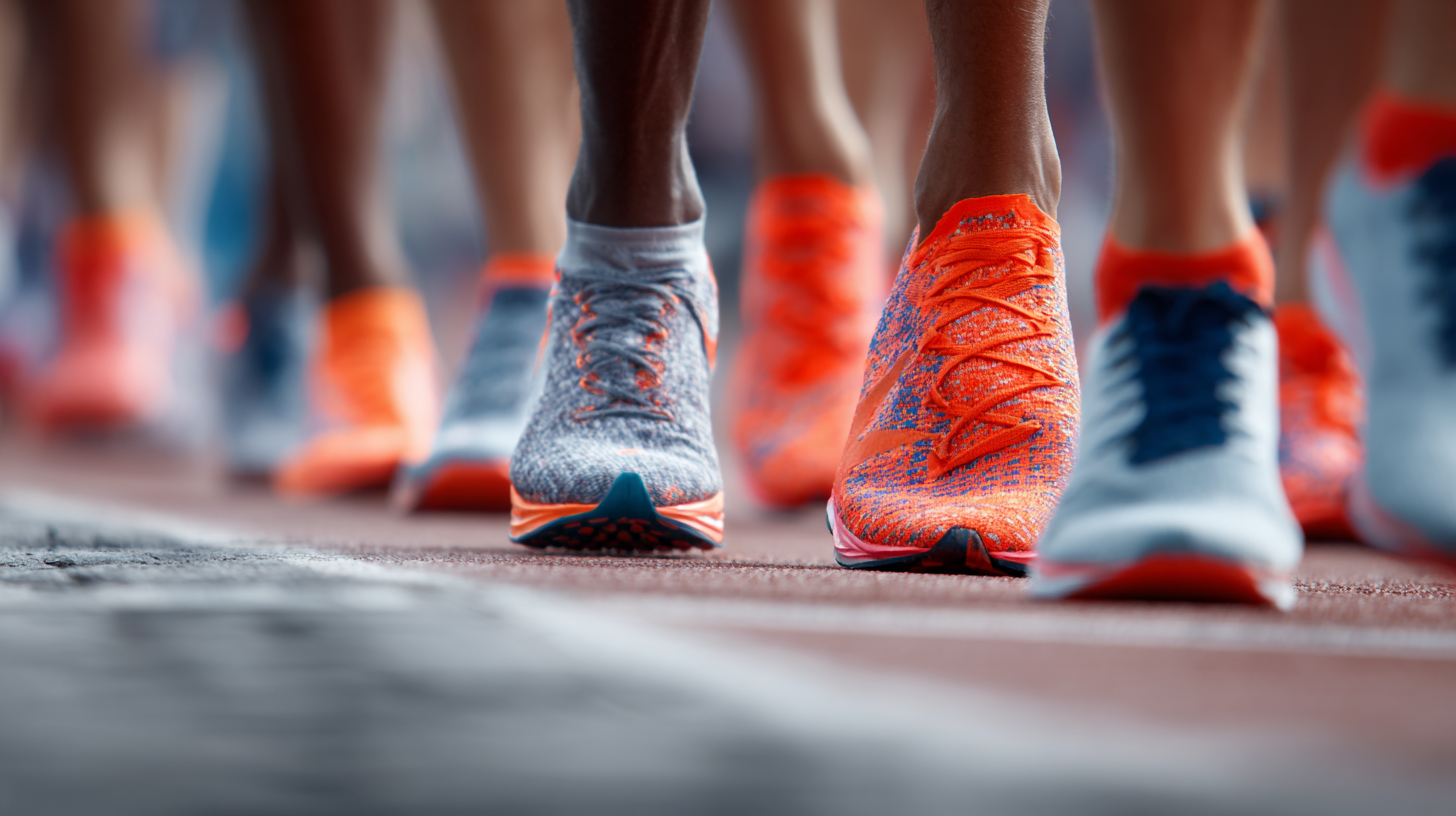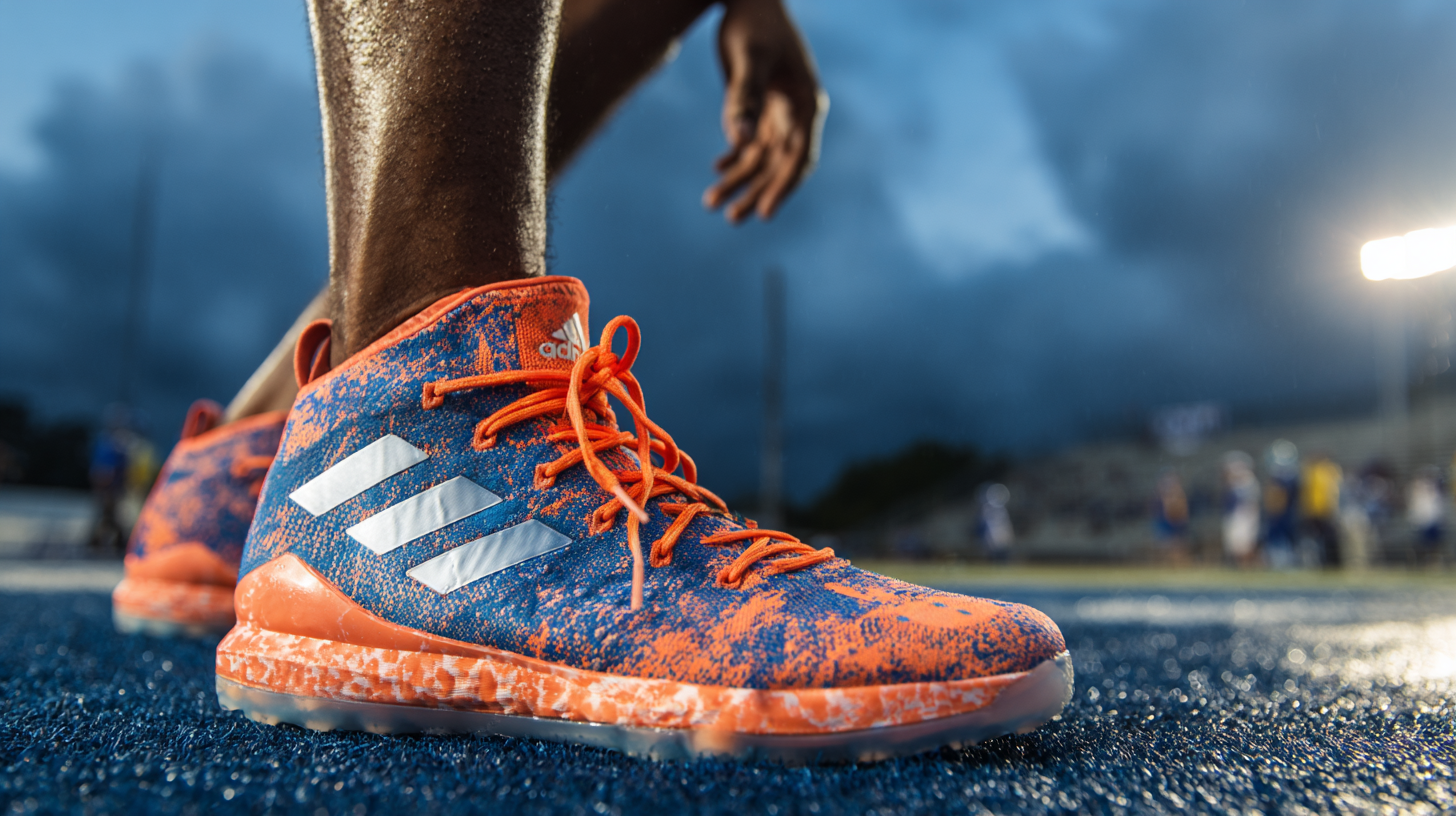
In the fast-evolving world of professional athletics, the significance of sports shoes cannot be overstated. These specially designed footwear items serve as the foundation for an athlete's performance, playing a pivotal role in enhancing speed, agility, and overall effectiveness in various sports. As technology advances, the integration of innovative materials and designs in sports shoes has led to game-changing applications that cater to the specific needs of athletes, whether on the track, field, or court. This blog will explore ten groundbreaking uses of the best sports shoes in professional athletics and examine why they matter not just for performance enhancement, but also for injury prevention and comfort. By understanding the benefits of these advanced sports shoes, we can appreciate their critical role in shaping the future of athletic success.

The evolution of sports shoe technology plays a pivotal role in enhancing athlete performance, reflecting significant advancements in both design and material use. The global sports footwear market size is projected to reach approximately $98 billion by 2025, with a compound annual growth rate (CAGR) of around 4.5%. This growth is fueled by increasing participation in sports and fitness activities, alongside rising consumer demand for high-performance athletic gear.
Among the various categories, running shoes dominate the market, driven by the surge in running events and health consciousness among consumers. The running footwear segment is expected to witness extensive growth, with innovations focusing on energy-return materials and improved cushioning systems that cater to diverse running styles. In contrast, the casual sports shoe segment also thrives, appealing to those who prioritize comfort in daily wear while remaining versatile for light athletic activities.
**Tips:** When selecting sports shoes, consider visiting specialized stores to test different brands and styles. Pay attention to your unique foot shape and running biomechanics, as these can significantly influence comfort and performance. Additionally, monitor the latest trends in shoe technology, as they can provide insights into how new features might better support your athletic endeavors.
In the world of professional athletics, the importance of advanced cushioning systems in sports shoes cannot be overstated. These technologies are designed not only for comfort but also to significantly reduce the risk of injuries. A study conducted by the American Journal of Sports Medicine reveals that approximately 30% of all sports injuries are related to inadequate footwear. By integrating advanced cushioning systems, manufacturers have been able to lessen impact stress on athletes’ joints, potentially decreasing overuse injuries by up to 23%.
Furthermore, leading brands in the industry are increasingly employing data-driven designs for their shoes. According to a report from Nike’s Research and Development team, their Zoom Air cushioning system allows for better energy return and shock absorption, translating to improved performance and reduced injury likelihood. The Biomedical Engineering Society has also found that athletes who adopt footwear with proper cushioning report lower incidences of stress fractures and plantar fasciitis, highlighting the critical role that these advancements play in an athlete’s long-term health and career sustainability.

When it comes to track and field events, the fit and design of sports shoes are pivotal in enhancing an athlete's performance. A well-fitted shoe ensures that athletes can maintain optimal speed and agility during their races or jumps. Shoes that are too tight can restrict movement and lead to discomfort, while overly loose shoes can cause instability, increasing the risk of injury. Therefore, it's crucial to find a shoe that fits well and supports the specific needs of each athlete.
Tip: When selecting sports shoes, consider trying them on at the end of the day when your feet are most swollen to ensure a proper fit. Make sure there is enough room in the toe box, and that the heel fits snugly to avoid blisters and unnecessary movement.
Moreover, shoe design plays an essential role in performance. Modern athletic shoes are equipped with advanced technologies, like carbon-fiber plates and lightweight materials, that can significantly enhance speed. The right design helps in energy return and facilitates better acceleration, making it easier for athletes to achieve their personal bests.
Tip: Look for shoes with excellent cushioning and arch support; this can help reduce fatigue during long training sessions and competitions. Also, consider shoes that are specifically designed for your track surface, whether it's synthetic, grass, or dirt, to ensure optimal grip and traction.
The performance of athletes in team sports can be significantly influenced by the type of sports shoes they wear. A comparative study from the Journal of Sports Sciences indicates that appropriate footwear can enhance performance metrics, such as speed, agility, and endurance, which are critical in team dynamics. For instance, studies show that shoes designed specifically for basketball can improve vertical jump height by an average of 5-7%, while soccer cleats can enhance traction on grass fields, reducing the risk of slips and falls, thus optimizing game performance.

When selecting sports shoes for team sports, athletes should consider factors such as fit, cushioning, and specific sport requirements. According to a 2022 report by the American Sports Medicine Association, poorly fitted shoes can lead to injuries in up to 60% of athletes. To ensure the best fit, athletes should try on shoes at the end of the day when their feet are slightly swollen, and always consider the type of surface they will be playing on.
Tip: Always break in new sports shoes during practice sessions rather than in competitive matches to prevent discomfort and potential injuries. Additionally, utilizing shoes designed for your specific sport can significantly impact your overall performance and injury prevention.
In the competitive world of professional athletics, the right pair of sports shoes can make a significant difference in performance and injury prevention. Athletes have increasingly turned to data-driven insights to evaluate shoe performance and longevity, emphasizing the importance of feedback in the development of specialized footwear. Many elite athletes participate in surveys and discussions to share their experiences with different shoe brands and models, providing critical information that manufacturers use to enhance design and technology.
These insights reveal common trends regarding comfort, cushioning, and durability. For instance, athletes often report that shoes with superior arch support not only provide immediate comfort but also contribute to decreased fatigue over extended periods of high-impact activity. Moreover, durability becomes a key factor in shoe selection; athletes are particularly concerned about how well a shoe holds up under rigorous training and competitions. This exchange of feedback creates a cycle of innovation, leading to the evolution of sports footwear that better meets the unique demands of various high-impact sports, ultimately helping athletes achieve their peak performance.
| Application Area | Shoe Type | Performance Rating (Out of 10) | Longevity (Months) | Athlete Feedback Summary |
|---|---|---|---|---|
| Marathon Running | Lightweight Cushioning Shoes | 9.2 | 6-8 | Great comfort and reduced fatigue. |
| Basketball | High-Top Performance Shoes | 8.8 | 5-7 | Excellent ankle support during games. |
| Soccer | Agility Cleats | 9.0 | 4-6 | Enhanced grip on varying surfaces. |
| Tennis | Stability and Support Shoes | 8.5 | 4-5 | Optimal balance between support and agility. |
| Track & Field | Sprint Spikes | 9.5 | 3-4 | Maximum speed and traction on the track. |
